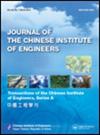A hybrid AHP-TOPSIS, MOORA technique for multi-objective optimization of thermal, mechanical, and water absorption behavior of epoxy/hemp, pine apple, and palm fiber composites
IF 1.2
4区 工程技术
Q3 ENGINEERING, MULTIDISCIPLINARY
Journal of the Chinese Institute of Engineers
Pub Date : 2023-11-03
DOI:10.1080/02533839.2023.2274092
引用次数: 0
Abstract
ABSTRACTNatural fiber composites are capable of replacing synthetic fiber composites in aeronautics, transportation, architecture, and sports. This work used epoxy matrices to produce natural hybrid fiber composites from hemp, pineapple, and palm fiber. To choose the best material for a design or component, a thorough and successful approach is needed. Material selection judgments are best handled by multi-criteria decision-making (MCDM) procedures. Integrated MCDM approaches like AHP, TOPSIS, and MOORA rank epoxy-hemp-pineapple-palm fiber composites. TOPSIS and MOORA use AHP weights to rank objects. AHP weights are used to rank objects in both the TOPSIS and MOORA methods. Selection is based on a variety of properties of the generated composites, including water absorption and specific heat capacity, in addition to density, hardness, tensile strength, and toughness. The thermal degradation of fiber polymerization is assessed by thermo-gravimetric analysis (TGA). According to a thorough evaluation of MCDM methodologies, a hybrid composite made of palm, hemp, and pineapple performed best, followed by a hybrid composite made of palm and pineapple. This study found that a palm fiber composite has subpar results. Scanning electron microscopy (SEM) is used to examine fiber form and interfacial bonding in composite samples that have been exposed to tension fracture.CO EDITOR-IN-CHIEF: Hsiau, Shu-SanASSOCIATE EDITOR: Chen, Ping-HeiKEYWORDS: Hybrid epoxy natural fibers compositeTGAMCDMAHPTOPSIS and MOORA Nomenclature AHP=Analytical hierarchy processARAS=Additive ratio assessmentCI=Consistency indexCR=Consistency ratioDTG=Derivative of mass variationELECTRE=Elimination and choice translating realityFC1=Epoxy-hemp compositeFC2=Epoxy-pine apple compositeFC3=Epoxy-palm fiber compositeFC4=Epoxy-hemp-pine apple compositeFC5=Epoxy-pine apple-palm compositeFC6=Epoxy-palm-hemp fiber compositeFC7=Epoxy-palm-hemp-pine apple compositeMCDM=Multi-criteria decision-makingMOORA=Multi-objective optimization on the basis of ratio analysisRI=Random inconsistency indicesSEM=Scanning electron microscopySHC=Specific heat capacityTOPSIS=Technique for order preference by the resemblance to an ideal solutionTS=Tensile strengthTGA=Thermo gravimetric analysisWA=Water absorptionWPM=Weighted product modelWSM=Weighted sum modelWf=Wet weight of sample after time in water subtractedWi=Dry weight of sampleAcknowledgmentsThe authors esteem the insightful advice provided by all of the subject matter specialists. The authors are grateful to the Aditya Institute of Technology and Management in Tekkali, where they acquired access to the ARC laboratory and R&D laboratory funded by the European Centre for Mechatronics (APS GMBH), and Aachen Department of Science and Technology (DST), respectively.Disclosure statementNo potential conflict of interest was reported by the author(s).AHP-TOPSIS和MOORA混合技术用于环氧树脂/大麻、松果和棕榈纤维复合材料的热、力学和吸水行为的多目标优化
摘要天然纤维复合材料在航空、交通、建筑、体育等领域能够取代合成纤维复合材料。这项工作使用环氧树脂基质从大麻、菠萝和棕榈纤维中生产天然混合纤维复合材料。为设计或部件选择最佳材料,需要一种彻底而成功的方法。材料选择判断最好由多准则决策(MCDM)程序处理。综合MCDM方法,如AHP、TOPSIS和MOORA对环氧树脂-大麻-菠萝-棕榈纤维复合材料进行排名。TOPSIS和MOORA使用AHP权重对对象进行排序。在TOPSIS和MOORA方法中,AHP权重用于对对象进行排序。选择是基于所生成的复合材料的各种性能,包括吸水率和比热容,除了密度,硬度,抗拉强度和韧性。采用热重分析(TGA)对纤维聚合的热降解进行了评价。根据对MCDM方法的全面评估,棕榈、大麻和菠萝制成的混合复合材料表现最好,其次是棕榈和菠萝制成的混合复合材料。这项研究发现,棕榈纤维复合材料的效果不佳。利用扫描电子显微镜(SEM)对拉伸断裂后复合材料试样的纤维形态和界面结合进行了研究。副主编:陈平黑杂化环氧天然纤维复合材料etgamcdmahptopsis和MOORA命名法AHP=分析层次过程aras =添加比评估ci =一致性指数cr =一致性比率odtg =质量变化导数electre =消除和选择翻译现实fc1 =环氧-大麻复合材料efc2 =环氧-松果复合材料efc3 =环氧-棕榈纤维复合材料efc4 =环氧-大麻-松果复合材料efc5 =环氧-松果复合材料efc6 =环氧-棕榈-大麻纤维复合材料efc7 =环氧-棕榈-大麻-松果compositeMCDM=多准则决策moora =基于比率分析的多目标优化ri =随机不一致指数sem =扫描电镜shc =比热容topsis =按理想溶液相似度排序的技术ts =拉伸强度tga =热重分析wa =吸水率wpm =加权产品模型wsm =加权和模型wf =样品在水中经过一段时间后的湿重wi =样品的干重尊重所有主题专家提供的有见地的建议。作者感谢Tekkali的Aditya技术和管理研究所,在那里他们获得了ARC实验室和由欧洲机电一体化中心(APS GMBH)和亚琛科技部(DST)分别资助的研发实验室的使用权。披露声明作者未报告潜在的利益冲突。
本文章由计算机程序翻译,如有差异,请以英文原文为准。
求助全文
约1分钟内获得全文
求助全文
来源期刊
CiteScore
2.30
自引率
9.10%
发文量
57
审稿时长
6.8 months
期刊介绍:
Encompassing a wide range of engineering disciplines and industrial applications, JCIE includes the following topics:
1.Chemical engineering
2.Civil engineering
3.Computer engineering
4.Electrical engineering
5.Electronics
6.Mechanical engineering
and fields related to the above.

 求助内容:
求助内容: 应助结果提醒方式:
应助结果提醒方式:


